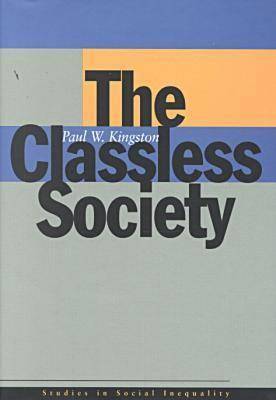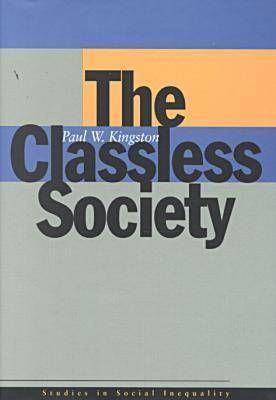
- Retrait gratuit dans votre magasin Club
- 7.000.000 titres dans notre catalogue
- Payer en toute sécurité
- Toujours un magasin près de chez vous
- Retrait gratuit dans votre magasin Club
- 7.000.0000 titres dans notre catalogue
- Payer en toute sécurité
- Toujours un magasin près de chez vous
Description
Are there classes in America? In The Classless Society Paul Kingston forcefully answers no.
This book directly challenges a long-standing intellectual tradition of class analysis, recently revitalized by such prominent scholars as Erik Olin Wright and John Goldthorpe. Insisting on a realist conception of class, Kingston argues that presumed "classes" do not significantly share distinct, life-defining experiences.
Individual chapters assess the extent of class structuration in five dimensions of life: mobility (how demographically cohesive are classes?), interaction patterns (do classes exist as communal groups?), cultural orientation (are there class cultures, as Bourdieu and his followers maintain?), class sentiment (to what extent do objective position and subjective sentiments align?), and political orientations (do classes represent distinct political forces?). This broad assessment is the basis for Kingston's conclusion that classes do not exist in America in any meaningful way.
The Classless Society analyzes prominent general "maps" of the American class structure, as well as the less-studied extremes of socioeconomic position ("Lives of the Rich and Poor"), the alleged emergence of post-industrial classes (the "New Class" and the "McProletariat"), and class structuration in other societies ("American Unexceptionalism").
Kingston rigorously addresses the question, "How would you recognize a class if you saw one?" thus establishing clear grounds for engaging the issue. He relates the findings and methods of the best contemporary research in substantial detail, allowing the reader to assess the book's conclusions from a thorough evidentiary base.
Spécifications
Parties prenantes
- Auteur(s) :
- Editeur:
Contenu
- Nombre de pages :
- 280
- Langue:
- Anglais
- Collection :
Caractéristiques
- EAN:
- 9780804738040
- Date de parution :
- 01-08-00
- Format:
- Livre relié
- Format numérique:
- Genaaid
- Dimensions :
- 156 mm x 234 mm
- Poids :
- 576 g

Les avis
Nous publions uniquement les avis qui respectent les conditions requises. Consultez nos conditions pour les avis.






